Comments / Questions (7)
![]() Kayla Williams wrote:
Kayla Williams wrote:
I believe the other person meant when you start the first fan part of the pattern is says to only do 4 fans total. That would leave 8 sc unworked and a large hole in that space that you don't see in the photos if you join it to the beginning of the round to start on the next. That's why everyone, including myself, is confused. the instructions aren't very clear in some places. So what they were asking is do you actually leave them unworked or do you do 6 fans and not 4 as the pattern states?
08.07.2020 - 17:35DROPS Design answered:
Dear Mrs Williams, you are working all stitches either in Pattern-1 or in A.1 as follows: 16-22-25 stitches worked in pattenr-1, 1 chain, 4 repeats of A.1 (= each A.1 is worked over 5 sts x 4 = you work A.1 over the next 20 sts), end round with 1 ch, 1 sl st in the first st at the beg of round, you have now worked over the 16-22-25+20=36-42-45 sts of the round. Does it help?
09.07.2020 - 09:07
![]() Rebecca Robertson wrote:
Rebecca Robertson wrote:
The online pattern uses sc to create toe and printed version uses dc. Which is it?
08.05.2020 - 17:52DROPS Design answered:
Dear Mrs Robertson, make sure you printed the appropriate US-English pattern (1 sc = US/English = 1 dc = UK/English). Happy crocheting!
11.05.2020 - 08:16
![]() Susan wrote:
Susan wrote:
Very disappointed with the way the pattern is written...beginning with row 4. I always have issues with the patterns on this site
18.05.2019 - 20:40DROPS Design answered:
Dear Susan, The DROPS patterns are knitted and crocheted by thousands and thousands of people around the world. We understand however that in certain countries, with different knitting/crochet traditions than Scandinavia, our patterns might be written in a way that differs from what some are used to. Just have another try with new eyes and follow each step as described (ex round 4 is an increase round where you will increase 6-6-5 sts on the round. Happy crocheting!
20.05.2019 - 14:13
![]() Maria Unell wrote:
Maria Unell wrote:
Jag virkar storlek 38/40 och första varvet med solfjädrar står det att de ska virkas över de nästa 20 fm. Fast på 20 maskor får jag 6 solfjädrar, inte 4. Hur ska det vara här?
29.01.2017 - 21:09DROPS Design answered:
Hej Maria. Du har 20 m og hver gentagelse af A.1 gaar over 5 m, saa det er 4 gentagelser i alt.
30.01.2017 - 15:59
![]() Eva-Lena Dahl wrote:
Eva-Lena Dahl wrote:
Hej igen! se tidigare fråga. Tror jag kommit på felet. Mönster 1 första varvet ska man sticka 22 (storlek 35/37) stolpar enl mönster 1, inte 16 som det står (16-22-25 i beskrivningen). Då har man 14 maskor för diagram A1 - solfjädrar - och det blir då 4 solfjädrar resten av varvet. Det verkar stämma för mig när jag virkar. För övrigt är detta en toppensida med många fina beskrivningar - min favorit!
17.01.2017 - 20:29
![]() Eva-Lena Dahl wrote:
Eva-Lena Dahl wrote:
När jag ska virka första varvet med solfjädrar så står det i mönstret. Stolpar första 16 maskorna, sedan börjar jag med mönster enligt A1 över 20 maskor? som ska upprepas totalt 4 gånger, det blir fler än 4 solfjädrar, jag får 6 st solfjädrar på varvet för storlek 35/37. Andra varvet ska jag göra 22 maskor enligt mönster 1 - jag har bara 16 maskor före A1-mönstret. Har jag missförstått mönstret eller är något fel? Tacksam svar.
17.01.2017 - 13:49DROPS Design answered:
Hej Eva-Lena. Jeg skal se paa det og sende videre. Om det er korrekt, saa retter vi ellers giver jeg besked senere hvad der ellers menes
18.01.2017 - 15:59
![]() Cyndi Jackson wrote:
Cyndi Jackson wrote:
I am having a problem understanding this pattern. On round 14, are you really leaving 8 st. unworked, joining to beginning of row, or are we turning the work,
09.02.2016 - 06:10DROPS Design answered:
Dear Mrs Jackson, when piece measures 14-16-18 cm (see size), you don't work in the round anymore fasten off. On next row, join as stated and work now in rows leaving some sts unworked on mid upper foot for the opening of foot. Happy crocheting!
09.02.2016 - 10:21
Water Fairy |
|||||||||||||
|
|
|||||||||||||
Crochet DROPS slippers with fan pattern in "Nepal".
DROPS Extra 0-1168 |
|||||||||||||
|
CROCHET INFO: At beg of every sc round, replace first sc with 1 ch and finish round with 1 sl st in first ch. At beg of every dc round, replace first dc with 3 ch and finish round with 1 sl st in 3rd ch. Beg every sc row with 1 ch (replaces first sc). Beg every dc row with 3 ch (replaces first dc). PATTERN-1: ROUND 1: Work 1 dc in back loop of every sc. ROUND 2: Work 1 sc in back loop of every dc. Repeat rounds 1 and 2. PATTERN-2: ROW 1 (= WS): Work 1 sc in front loop of every dc. ROW 2 (= RS): Work 1 dc in back loop of every sc. Repeat rows 1 to 2 until finished measurements. FAN: Work 1 dc in back loop of next sc but wait with last pull through (= 2 sts on hook), work 1 dc in same st the same way, pull yarn through all sts on hook DECREASE TIP: Dec 1 dc by working 2 dc tog as follows: Work 1 dc in next sc but wait with last pull through, work 1 dc in next sc the same way, make 1 YO and pull yarn through all 3 sts on hook. PATTERN: See diagram A.1. ---------------------------------------------------------- SLIPPER: Piece is worked in the round from toe and back to instep, then work back and forth from mid back on heel. Work 4 ch on hook size 3.5 mm/E/4 with Nepal and form 1 ring with 1 sl st in first ch. ROUND 1: Work 6-6-5 sc in ch-ring – READ CROCHET INFO! ROUND 2: Work 2 sc in every sc = 12-12-10 sc. ROUND 3 (and then every other round): Work 1 sc in every sc. ROUND 4: Work * 1 sc in first/next sc, 2 sc in next sc *, repeat from *-* 6-6-5 times in total = 18-18-15 sc. ROUND 6: Work * 1 sc in each of the first/next 2 sc, 2 sc in next sc *, repeat from *-* 6-6-5 times in total = 24-24-20 sc. ROUND 8: Work * 1 sc in each of the first/next 3 sc, 2 sc in next sc *, repeat from *-* 6-6-5 times in total = 30-30-25 sc. ROUND 10: Work * 1 sc in each of the first/next 4 sc, 2 sc in next sc *, repeat from *-* 6-6-5 times in total = 36-36-30 sc. Inc are now done in size 5/6½ (EU35/37). REMEMBER THE CROCHET GAUGE! SIZE 7½/9 - 9½/10½ (EU38/40- 41/43) : ROUND 12: Work * 1 sc in each of the first/next 5 sc, 2 sc in next sc *, repeat from *-* 6-5 times in total = 42-35 sc. Inc are now done in size 7½/9 (EU38/40). SIZE 9½/10½ (EU41/43): ROUND 14: Work * 1 sc in each of the first/next 6 sc, 2 sc in next sc *, repeat from *-* 5 times in total = 40 sc. ROUND 16: Work * 1 sc in each of the first/next 7 sc, 2 sc in next sc *, repeat from *-* 5 times in total = 45 sc. Inc are now done in size 9½/10½ (EU41/43). ALL SIZES: = 36-42-45 sc on round. Then work as follows: PATTERN-1 - see explanation above, over the first 16-22-25 sc, ch 1, work A.1 over the next 20 sc as follows: * skip 2 sc, in next sc work as follows: FAN - see explanation above, ch 3, work a new fan in same sc, skip 2 sc *, repeat from *-* 4 times in total, 1 ch. On next round work as follows: Pattern-1 over the first 22 dc, 1 sc around ch, work A.1 as follows: * 1 sc in fan, 3 sc around ch-space, 1 sc in fan *, repeat from *-* 4 times in total, 1 sc around ch. Repeat these 2 rounds until piece measures 14-16-18 cm / 5½"-6 1/4"-7", adjust to finish with a round with dc. Fasten off. Now work back and forth, start from WS. Do not work over the middle 2 repetitions of A.1. Work as follows, beg from WS: Work 1 sc between transition from middle and last repetition of A.1, continue to work A.1 over next repetition as before, 1 sc around ch, PATTERN-2 - see explanation above, over the next 16-22-25 dc, 1 sc around ch, A.1 over the next repetition as before, fasten with 1 sc between transition to next repetition = 30-36-39 sc. Continue with A.1 and pattern-2. On every row with dc beg and end row with 1 dc and on every row with sc beg and end row with 1 sc - Remember CROCHET INFO. When slipper measures 20-23-25 cm / 8"-9"-9 3/4" on the shortest (i.e. approx. 6-7-7 cm / 2½"-2½"-2 3/4" from where it is divided), adjust so that next row is with sc, insert 1 marker in the middle of piece (= 1 sc at beg of row, A.1, 1 ch and 11 sc on each side of marker). On next row dec 1 dc on each side of marker, i.e. beg 2 sts before marker and work the next 4 dc tog 2 by 2 – READ DECREASE TIP (= 2 dc dec) = 20 dc under foot. Work 1 row without dec, place slipper double and work tog mid back with a row with sl sts around both layers (slipper now measures approx. 22-24-27 cm / 8¾''-9½''-10½'' from toe to heel). Fasten off. EDGE: Beg mid back and work a finishing edge at the top around the opening on slipper as follows: Work 1 sc, work along each long side: 4 sc around every ch-space (= dc row) and 1 sc in outer loops of every sc row, work as follows over the two repetitions skipped. A.1 over the middle two repetitions of A.1 as before (i.e. sc row), adjust so that sc no is divisible with 5. Then work as follows: ch 3, * skip 2 sc, 1 fan in next sc, ch 3, 1 fan in same sc, skip 2 sc *, repeat from *-* around the entire round, finish with 1 sl st in 3rd ch. Fasten off. Work another slipper the same way. |
|||||||||||||
Diagram explanations |
|||||||||||||
|
|||||||||||||
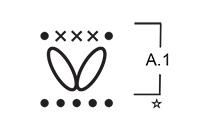
|
|||||||||||||
|
Have you made this or any other of our designs? Tag your pictures in social media with #dropsdesign so we can see them! Do you need help with this pattern?You'll find 16 tutorial videos, a Comments/Questions area and more by visiting the pattern on garnstudio.com. © 1982-2025 DROPS Design A/S. We reserve all rights. This document, including all its sub-sections, has copyrights. Read more about what you can do with our patterns at the bottom of each pattern on our site. Have you finished this pattern? |
|||||||||||||







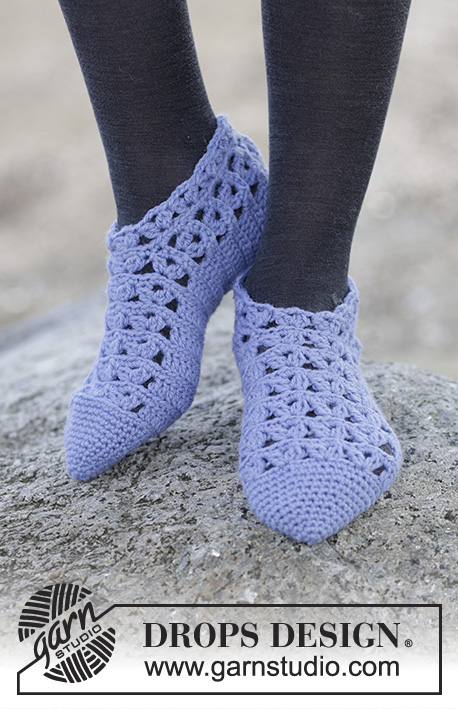
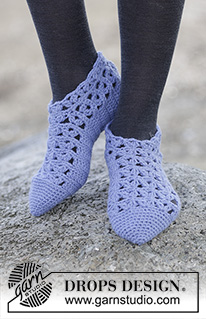


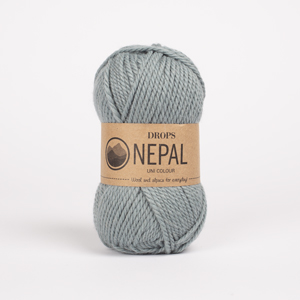






















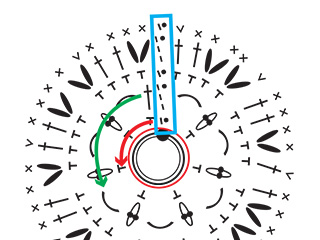



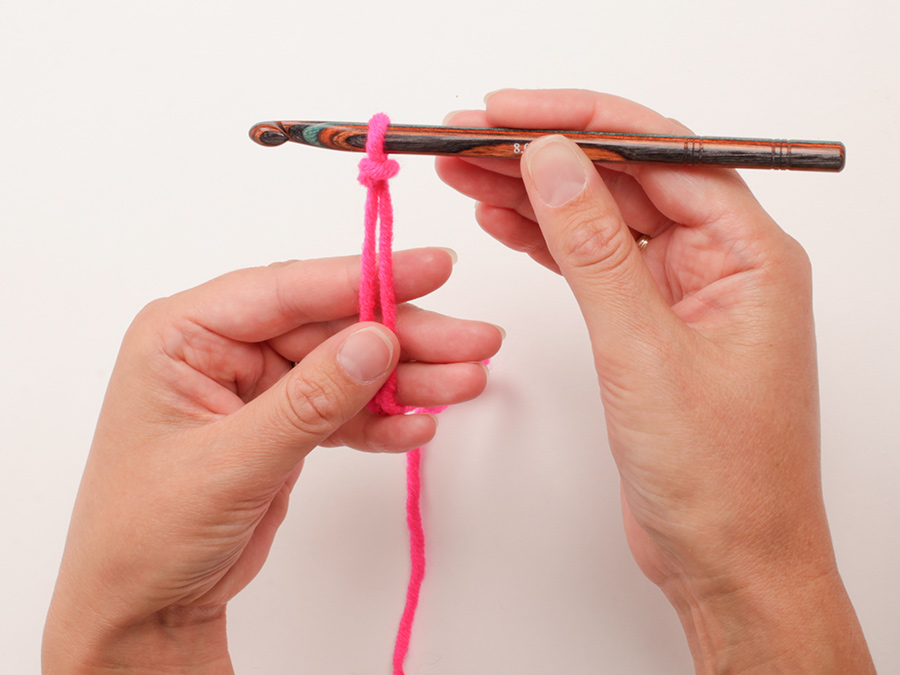
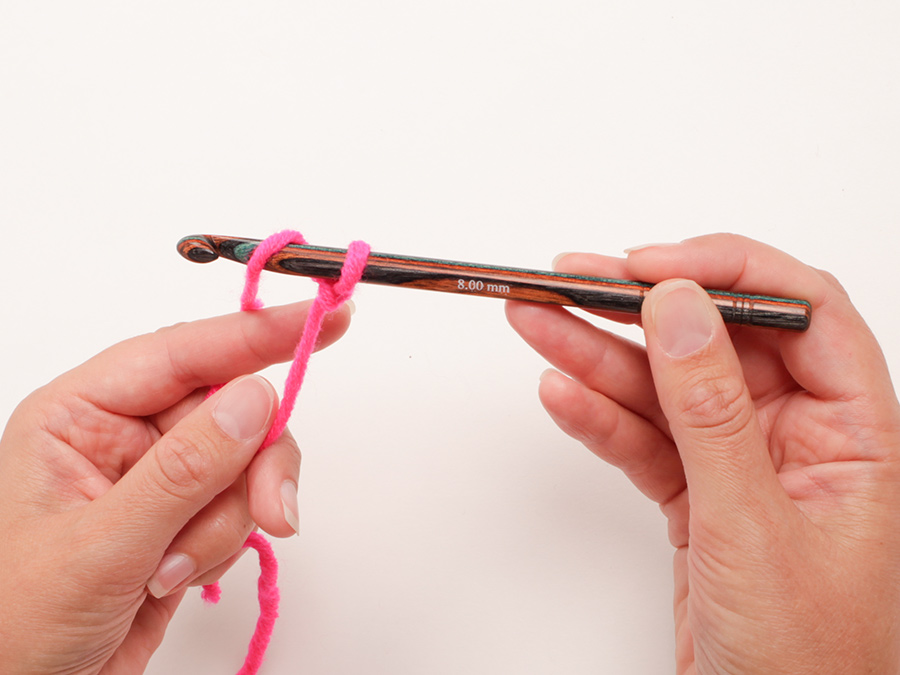
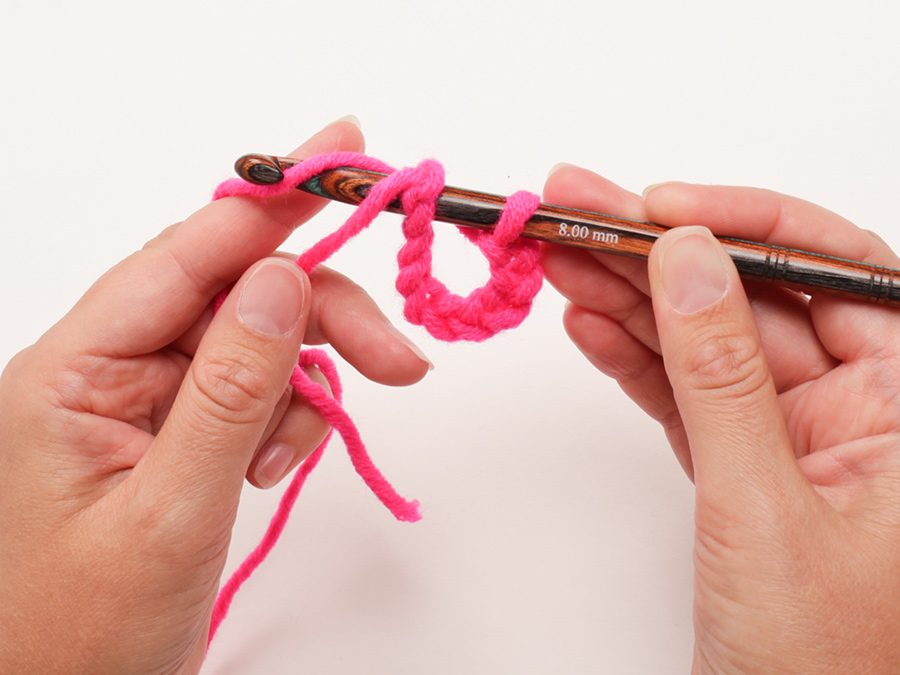
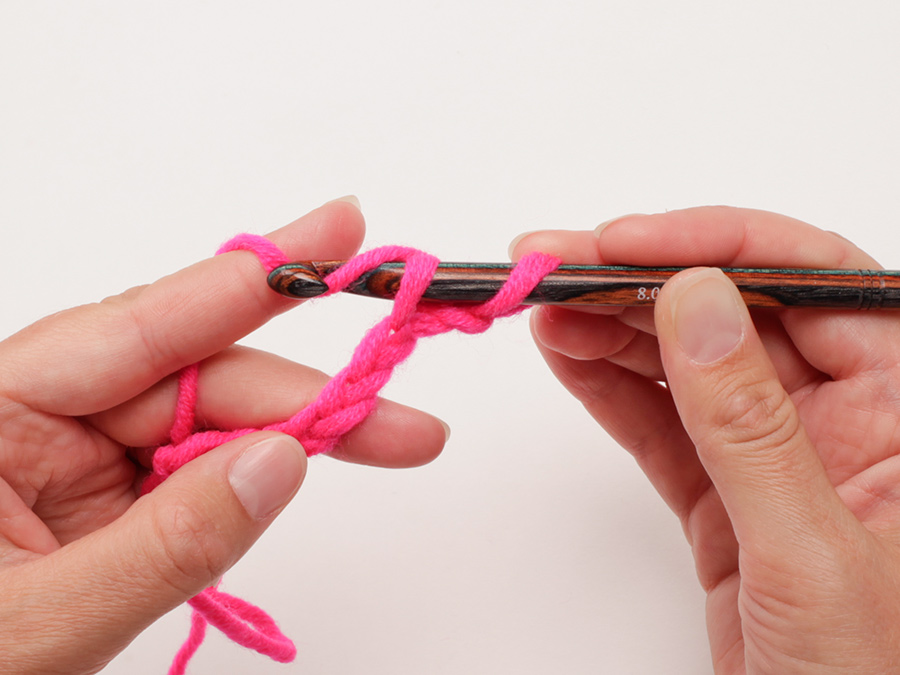
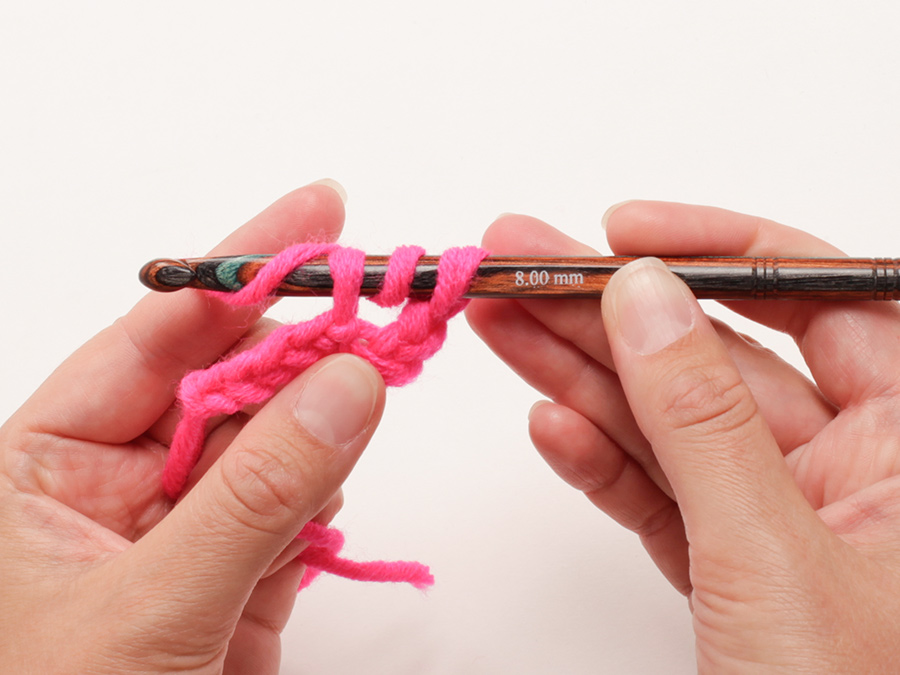






Post a comment to pattern DROPS Extra 0-1168
We would love to hear what you have to say about this pattern!
If you want to leave a question, please make sure you select the correct category in the form below, to speed up the answering process. Required fields are marked *.